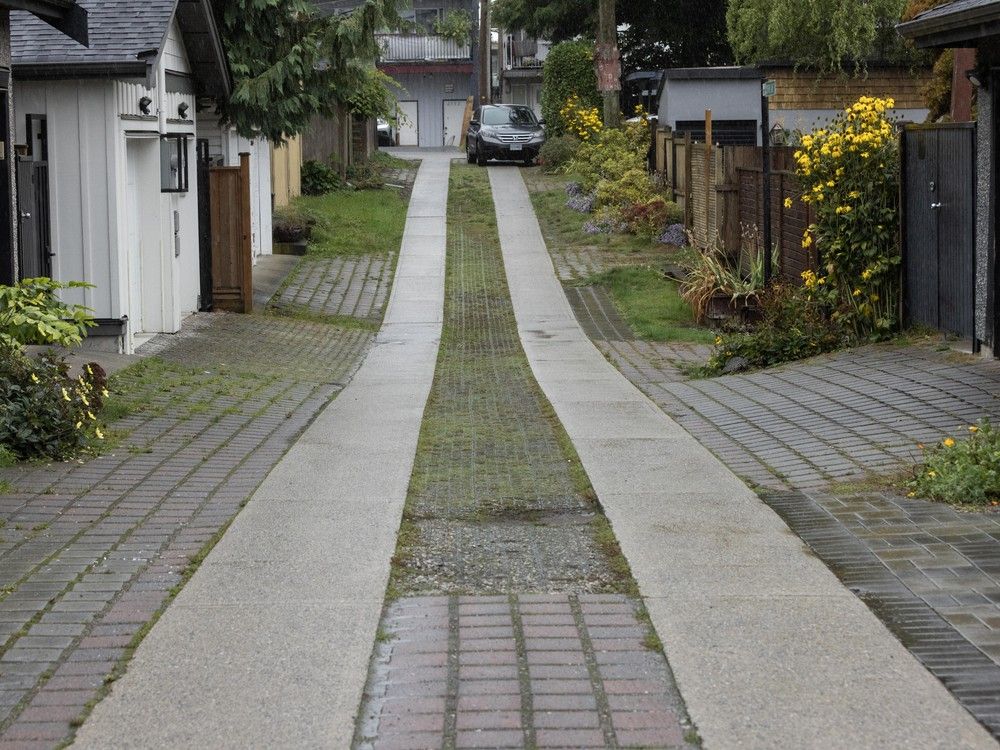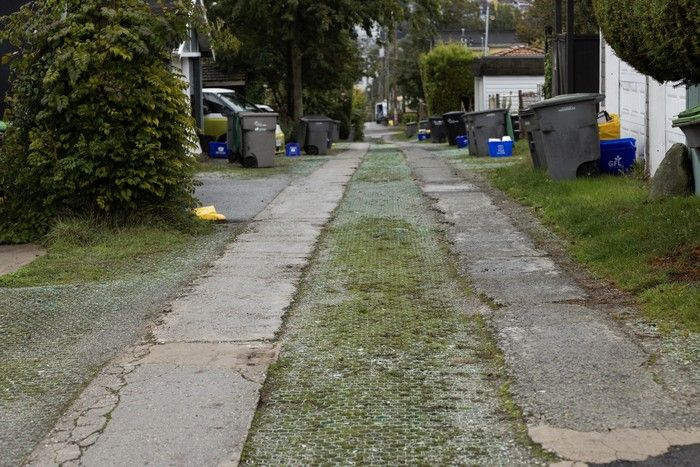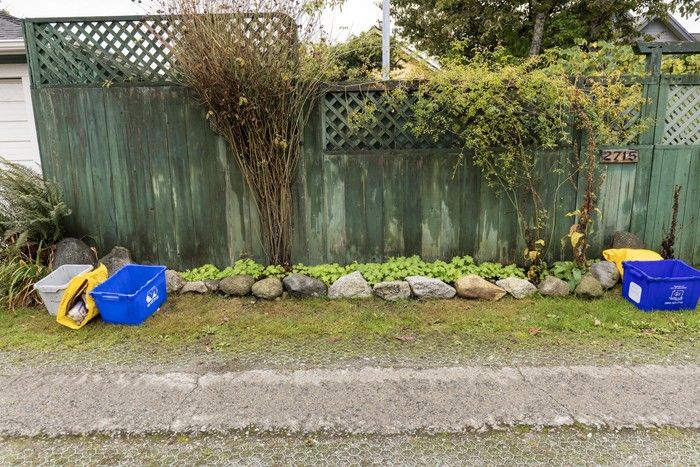
It’s been over 20 years since the City of Vancouver first experimented with creating so-called country lanes — using greener, permeable surfaces instead of asphalt in the alleys behind homes.
During three small test projects started in 2002, alleys in different neighbourhoods were covered in grass, except for two narrow strips of concrete to accommodate the wheels of cars and garbage trucks.
However, the idea never took off beyond that. Some felt these lanes weren’t durable enough and not able to efficiently absorb rain.
Now, as other cities have turned to thinking about alternatives for back lanes, Vancouver is preparing to relaunch the country lane option using artificial green pavers, made with non-biodegradable plastics, instead of grass.

In a memo last month to city council, Lon LaClaire, general manager of engineering services, said the cost of constructing a standard laneway using green pavers that can sustain the weight of heavier vehicles such as SUVs is estimated at approximately $437,000.
Residents would be able to petition the city to improve their back lane the same way they might request speed bumps or lighting. A successful petition would need signatures from at least two-thirds of the affected property owners (representing at least 50 per cent of the properties assessed values) and costs would be split aong them.
A lane made of green pavers is 60 per cent more expensive than a conventional asphalt one, according to the city, which would not share in the cost of any future country lanes the way it did during the original pilot projects.
Vancouver councillor Mike Klassen has lived in a house that backs onto one of the more successful early pilot projects near Fraser Street and King Edward Avenue and been a longtime promoter of adding more country lanes in the city.
“It’s about the permeability and redirection of heat that comes from green lanes so they are cool, verdant and pleasant places. Poured asphalt alleyways are dustbowls,” said Klassen.

Former city planner Sandy James has also been urging the city to consider expanding the use of them.
She wrote two years ago that while the initial maintenance of these lanes is higher, “these lanes were never costed for the environmental, sustainable and social public space aspects they provide.”
The idea of the need for sustainable open spaces in laneways for a densifying city was not really on the radar, she wrote.
James recalled it was one resident, Sharole Taylor, who “walked into city hall and asked why a perfectly nice dirt lane east of Fraser Street needed to be paved with asphalt, and asked why in a neighbourhood that had few recreational spaces for young kids that a back lane could not be dealt with differently.”
This led to the city working with residents to build the first country lane which would go on to win the American Public Works Association’s technical innovation award in 2003.
“We have had barbecues. It’s traffic calming,” said Klassen, pointing out the other benefits.
The 2002 pilot project had a budget of $150,000, according to media reports, and the residents whose homes backed onto the country lane didn’t pay the full cost of installing it.
James suggested that residents who opt for country lanes should “absolutely not” be required to take on the entire costs, since they would be providing ecological benefit to the city by reducing off lane flooding, which the city pays for.
“There used to be a cost share between the city and the residents on these back lanes.”
LaClaire told Postmedia in a statement there will be more details about how residents who wish to pursue a country lane petition can get involved in the coming months.
He said the city has learned valuable lessons since those early country lanes were launched two decades ago.
“The original country lane typology, while innovative, proved costly to construct and maintain, and posed challenges for long-term durability and rainwater management. Subsequent projects allowed us to test new approaches such as porous asphalt, traditional paving paired with infiltration trenches, and dry wells. These approaches provided more reliable drainage, improved water quality and a durable travelling surface.”
LaClaire said his team has researched how other cities including Edmonton, Chicago, Los Angeles and Toronto have approached retrofitting lanes. They found that many designs used permeable pavers that allow rainwater to infiltrate into the ground, “reducing surface run-off and ponding.”
They are also looking at other so-called green infrastructure such as “rain gardens and planters and localized green zones that reduce flooding risks and help address urban heat.”
He added they are learning that these green pavers can be filled with gravel or seed to create more sustainable laneway surfaces and they have been using them in medians and parking shoulders at various sites so they can get better at installing and maintaining them.
jlee-young@postmedia.com